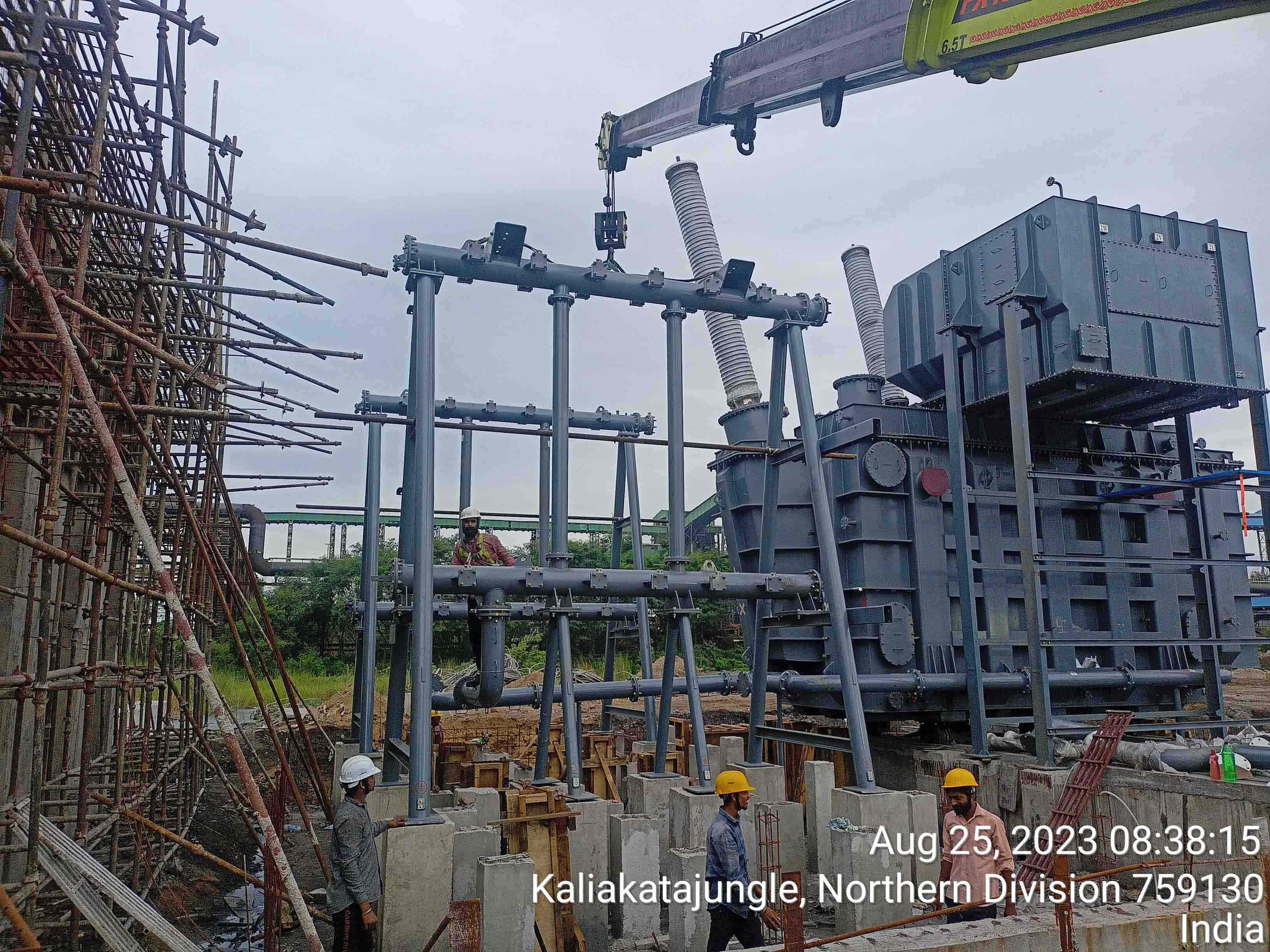
The erection of power and distribution transformers involves the process of setting up and installing transformers for electrical power distribution. Transformers are crucial components in the power grid, responsible for stepping up or stepping down voltage levels for efficient transmission and distribution of electrical energy. Here's a general outline of the erection process:
-
Site Preparation:
- Clear the site of any obstacles or debris.
- Ensure a solid and level foundation to support the transformer's weight.
- Install a transformer platform or pad, following specifications provided by the transformer manufacturer.
-
Transportation and Unloading:
- Transport the transformer to the site using suitable vehicles.
- Use cranes or other lifting equipment to unload the transformer safely.
-
Positioning:
- Carefully position the transformer on the prepared foundation.
- Align the transformer with the incoming and outgoing electrical connections.
-
Assembly and Connection:
- Assemble any accessories or components that come with the transformer, such as cooling fans, bushings, and monitoring devices.
- Connect the transformer to the electrical system, including high-voltage and low-voltage connections.
-
Oil Handling:
- If the transformer is oil-filled, fill it with the appropriate insulating oil. Ensure proper handling and disposal of oil in compliance with environmental regulations.
-
Testing:
- Conduct various tests to ensure the transformer's proper functioning. This may include insulation resistance tests, turns ratio tests, and other electrical tests.
- Perform routine checks on the transformer's components and connections.
-
Commissioning:
- Energize the transformer and integrate it into the power grid.
- Monitor the transformer's performance under load conditions.
- Address any issues that may arise during the commissioning process.
-
Documentation:
- Maintain detailed records of the transformer's specifications, test results, and commissioning procedures.
- Update electrical drawings and documentation to reflect the new configuration.
-
Safety Measures:
- Adhere to safety regulations and protocols during all phases of the erection process.
- Provide appropriate personal protective equipment for workers involved in the installation.
-
Environmental Considerations:
- Ensure compliance with environmental regulations, especially regarding oil-filled transformers.
- Implement spill containment measures to prevent environmental hazards.
It's important to note that the specific procedures may vary based on the type and size of the transformer, as well as local regulations and manufacturer recommendations. Always follow the guidelines provided by the transformer manufacturer and consult with electrical engineers and experts during the installation process.


